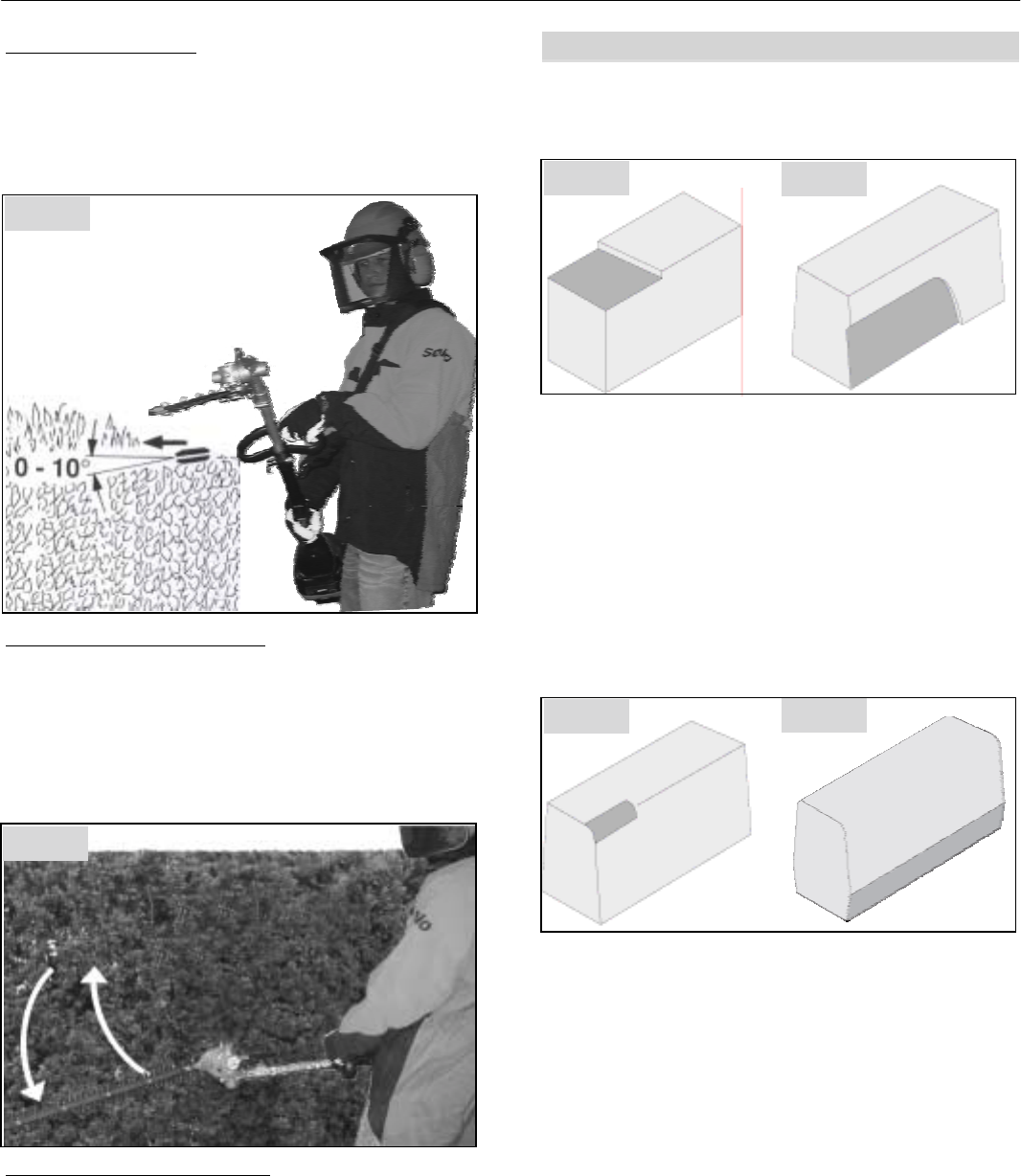
Using your blade hedge trimmer
ENGLISH 11
Trimming procedures
Cut the hedge in several stages, if the hedge needs
to be cut back a great deal. Between the passes, cut
back thicker branches and twigs with pruning shears
neiden.
Cutting the top of the hedge
Holding the shears at an angle (max. 10°) at the top
of the hedge, cut the hedge across to the opposite
edge to allow the cuttings to fall to the floor.
Recommended position of the angular gearbox: up
to 45° angle to the hedge.
Cutting the side of the hedge
Move the shears forwards and backwards vertically
to cut in arched movements, slowly advancing across
the hedge.
Recommended position of the loop handle: turned
90° into the higher cut direction.
To prevent the need for users to position themselves
immediately next to the hedge, we recommend the
setting of the angular gearbox at a slight angle.
7.3 Decorative cutting
The trapezoidal cutting pattern shown prevents the
lower hedge area from loosing its foliage due to
lack of light.
Fig.12:
Firstly, cut the hedge to the desired height. Cuttings
can be freed from the hedge by a slight pendulum
action. To achieve a straight cut, a taut piece of
string is positioned in the hedge at cutting height.
Fig.13:
Cut the hedge from below upwards into a
trapezoidal shape (to 1 m height. narrowed at the
top by approximately 10 cm). This prevents cuttings
falling onto that part of the hedge that has not yet
been cut, which may disrupt further cutting.
Slightly bevel the top edge of the hedge; then cut
back the bottom of the hedge near the ground.
The correct time for cutting hedges is:
Leaves: June and October
Needles: April and August
Fast growing hedges: approx. every 6 weeks from
May onwards.
Fig. 12
Fig. 11
Fig. 10
Fig. 13
Fig. 14
Fig. 15


















